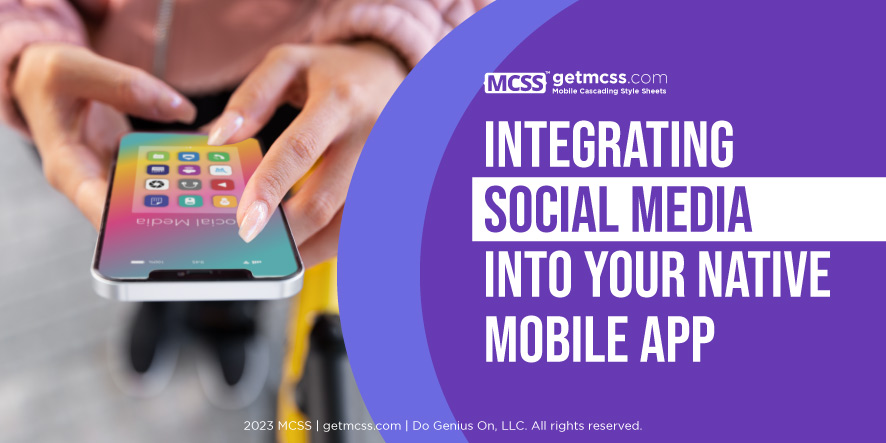Introduction
In the digital age, social media has become a vital part of our daily lives. It is not only a platform for social interaction but also a powerful tool for businesses. Integrating social media into your native mobile app can enhance user engagement, increase exposure, and ultimately drive business growth. This article will delve into the role of APIs in this integration process and how they can be used to create a more interactive and user-friendly mobile application.
Understanding APIs
APIs, or Application Programming Interfaces, are sets of rules and protocols that allow different software applications to communicate with each other. They define the methods and data formats that a program can use to communicate with other programs. APIs are crucial in the development of software applications as they allow different software systems to interact and share data and functionalities.
In the context of social media integration, APIs enable your native mobile app to interact with social media platforms such as Facebook, Instagram, Twitter, and LinkedIn. This interaction can range from simple tasks like sharing content on social media platforms to more complex functionalities like user authentication and data retrieval.
The Role of APIs in Social Media Integration
User Authentication
One of the most common uses of social media APIs in mobile apps is user authentication. This process involves verifying the user's identity by requiring them to log in to their social media account. This not only simplifies the login process for the user but also provides the app with access to the user's social media data, subject to the user's consent and the platform's privacy policies.
Here is a simple diagram illustrating the user authentication process:
Content Sharing
Another common use of social media APIs is enabling users to share content from the mobile app on their social media accounts. This can be a powerful marketing tool as it allows users to share their experiences with the app with their social media network, thereby increasing the app's exposure.
Data Retrieval
Social media APIs can also be used to retrieve user data from social media platforms. This can include basic user information, user posts, friends list, and more. This data can be used to personalize the user experience on the app.
Integrating Social Media APIs into Your Native Mobile App
The process of integrating social media APIs into your native mobile app involves several steps:
-
Choose the Social Media Platforms: The first step is to decide which social media platforms you want to integrate into your app. This will largely depend on your target audience and the platforms they are most active on.
-
Register Your App: Before you can use a social media platform's API, you will need to register your app with the platform. This usually involves creating a developer account, providing some basic information about your app, and agreeing to the platform's terms of service.
-
Implement the API: Once your app is registered, you can start implementing the API into your app. This involves writing code that sends requests to the API and handles the API's responses. The specifics of this process will depend on the API and the programming language you are using.
-
Test the Integration: After implementing the API, it's important to thoroughly test the integration to ensure it works as expected and provides a good user experience.
The Role of Mobile Cascading Style Sheets (MCSS) in the Development Process
While APIs play a crucial role in integrating social media into your native mobile app, it's also important to consider the role of Mobile Cascading Style Sheets (MCSS) in the development process. MCSS is a powerful tool that can improve efficiency, maintain design consistency across platforms, enable real-time updates, and simplify the overall development process.
MCSS can be integrated into various native Integrated Development Environments (IDEs) to help organize the project. For example, MCSS can be used to define the styles for different elements in your app, such as buttons, text fields, and navigation bars. This not only ensures design consistency across different screens and platforms but also makes it easier to update the design in the future. You can simply update the styles in the MCSS file and the changes will be reflected across your entire app.
Conclusion
Integrating social media into your native mobile app can greatly enhance the user experience and provide valuable marketing opportunities for your business. APIs play a crucial role in this process, enabling your app to interact with social media platforms in various ways. However, it's also important to consider other aspects of the development process, such as the use of Mobile Cascading Style Sheets (MCSS), to ensure a smooth and efficient development process.
By understanding the role of APIs in social media integration and leveraging the power of MCSS, you can create a more engaging, user-friendly, and successful mobile app.
For more information on how to integrate MCSS into your development process, check out our MCSS documentation.
References
-
Facebook for Developers. (n.d.). Share Dialog - Web - Social Plugins. Retrieved May 22, 2023, from https://developers.facebook.com/docs/sharing/reference/share-dialog
-
Google Developers. (n.d.). Share - Google Sign-In for Android. Retrieved May 22, 2023, from https://developers.google.com/identity/sign-in/android/share
-
Twitter Developer. (n.d.). Web Intent. Retrieved May 22, 2023, from https://developer.twitter.com/en/docs/twitter-for-websites/tweet-button/guides/web-intent

